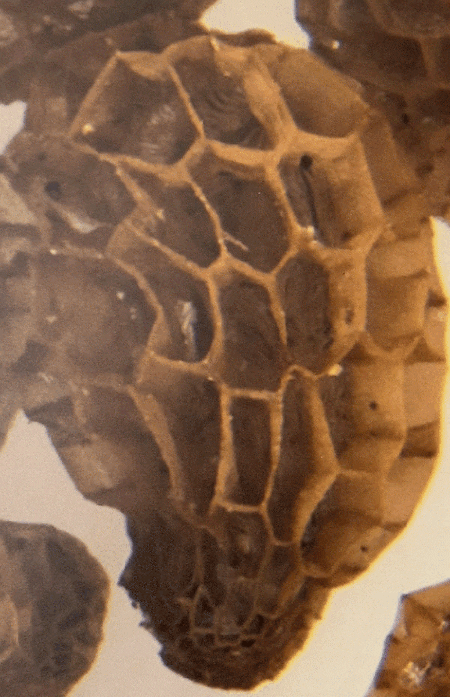by Karen Telleen-Lawton, Noozhawk Columnist
April 7, 2025 | 3:13 pm

What is this?
What do you think this photo depicts: 1) a filter; 2) a paint brush; 3) a seed; 4) an LED bulb or 5) part of a brain?
Before I visited the Pritzlaff Conservation Center at the Santa Barbara Botanic Garden, the intricate hexagonal design would have swayed me to conjure it was some sort of filter.
A brain I could also believe. If you guessed a paint brush, you would be closer. It is a future paint brush: the seed of a paint brush shrub.
The photo is part of a startlingly beautiful and beautifully startling exhibit at the Botanic Garden.
Curator Kevin Spracher explored a few of the 200,000 plant specimens in the garden’s seed bank to design an exhibit called, “Seeds of Change: Conservation Through Diversity.”
He tapped the expertise of artists and scientists to explore the hidden beauty of seeds. Castilleja mollis, the soft-leaved paint brush, is found only on Santa Rosa Island. Its seed is less than a tenth of an inch long.
The exhibit includes large-scale ceramic sculptures created by artist and certified California naturalist Rosie Brand from micrographs of the seeds.
One backpack-sized sculpture of a tiny seed looks like a nautilus; another reminds me of an Olympic torch. Their textures seem to invite touch.
I was struck, not for the first time, by nature’s profligate character. I knew that plants — from lowly dandelions to stately trees — may produce tens to hundreds of thousands of seeds per year.
I didn’t appreciate the multi-faceted beauty and architectural wonder of plant seeds. They throw caution to the wind, bury their beauty in the dirt, and carelessly allure insects to fly off with their masterpieces. They are uneconomic, inefficient, and crucial to the ecosystem.
Advanced art students from La Colina Junior High School were invited to choose a seed based on the micrographs, portraying their unique impressions.
Their drawings display such specificity and insight that the viewer comes away inspired not only by their attention to detail but by the power of evolution — even a divine creativity.
Up close and personal, mariposa lily seeds look like clutch purses for leopards or giraffes. A manzanita seed is rendered as something like a decorated chocolate-glazed doughnut. The vivid colors, appealing patterns, and otherworldly shapes make me wonder whether tiny creatures appreciate these artistic plant libraries.
As part of the exhibit, Brand created a zine called Field Notes from the Studio. Included in the zine are suggestions for creating your own journal, with intuitive prompts.
She suggests carrying a pocket-sized notebook whenever you walk or hike. Attuning yourself to detail, you can notice colors and aromas and feel the texture of leaves, flowers and seeds. (First make sure it’s not poison oak!)
She encourages you also to note the context of your observations, such as the weather or your own mood. “All these perceptions aid your reception to develop a relationship to nature,” Brand said.
The Seeds of Change exhibit formed a centerpiece for the 12th annual Santa Barbara Botanic Garden Conservation Symposium last February. The day-long symposium explored seeds for “their beauty, diversity, and their essential role in conservation.”
Now we all have a chance to explore the world of seeds through June. (Non-members need a reservation to visit.)
Prepare to see shapes you’ve never seen, experiencing nature in a new way. Prepare for wonder.
“At the epicenter, the seed bank both cradles the future for the biodiversity of California, and its past,” Brand said. “Encoded within each of these tiny seeds is a memory of a landscape that has been forever altered.”

Karen Telleen-Lawton is an eco-writer, sharing information and insights about economics and ecology, finances and the environment. Having recently retired from financial planning and advising, she spends more time exploring the outdoors — and reading and writing about it. The opinions expressed are her own.

